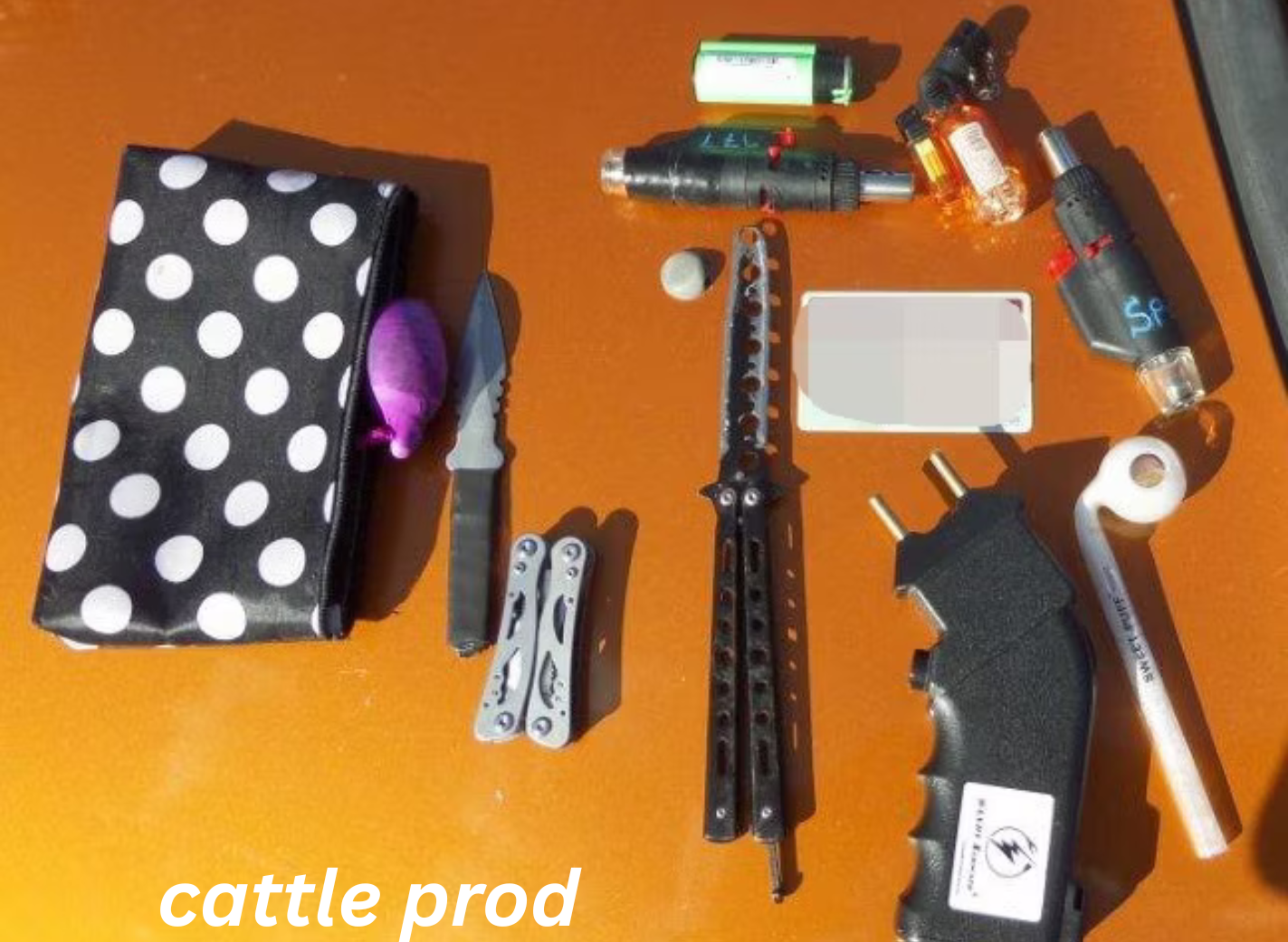Everything You Need to Know About Cattle Prods Uses Safety and Alternatives
Cattle prods are commonly used tools in livestock management, primarily for controlling and guiding large animals such as cows, bulls, and other livestock. These tools have been essential in the farming and ranching industries for decades, but they have also sparked debates about their ethical use and the well-being of the animals they are used on. This article aims to delve into the world of cattle prods, shedding light on their uses, safety considerations, and alternatives that might reduce the need for such tools while promoting animal welfare.
What Is a Cattle Prod
A cattle prod is a device used to move livestock by applying a mild electrical charge or physical force to the animal. It’s designed to encourage the animal to move when it’s either hesitant or unwilling to do so. There are different types of cattle prods, but they typically fall into two categories: manual and electric.
Manual Cattle Prods are simple tools, often resembling a long stick, that rely on the handler’s physical force to poke or prod the animal. They may have a pointed end to ensure that the animal feels the pressure. These are typically used in situations where the handler needs to provide some guidance without causing distress.
Electric Cattle Prods, on the other hand, are powered by electricity and are more commonly used in large-scale livestock operations. When the prod makes contact with the animal, it delivers a small electrical shock to encourage movement. These are highly effective in getting animals to comply with direction or movement but raise concerns about their humane use.
Historically, cattle prods have evolved from simple whips or sticks to modern, high-tech versions that can be operated with minimal effort. The history of cattle prods dates back to the 19th century, where farmers used various forms of electric shocks to move animals more efficiently. Over time, they became a staple in large-scale farming and livestock handling operations.
Common Uses of Cattle Prods
Cattle prods serve a variety of functions in livestock management, and their use has become deeply integrated into everyday farming practices.
Livestock Handling: One of the primary uses of a cattle prod is to herd and move livestock, especially when animals are reluctant to enter trailers, loading chutes, or certain enclosures. They act as a quick and effective tool for directing animals without causing major harm. Farmers often use the prod to encourage movement in situations where cattle may be hesitant or obstinate, such as when they’re being moved to new pastures or into transport vehicles.
Transportation and Loading: Transporting livestock can be a stressful process for both the animals and handlers. Cattle prods are used to help direct the animals into trailers, pens, or auction facilities, ensuring they move quickly and safely. In many livestock auctions or markets, the cattle prod is a critical part of the loading and unloading process.
Veterinary and Health Care: In veterinary settings, cattle prods may be used to assist with medical procedures or testing. For example, they can help position an animal for examination or vaccination, especially when the animal is unwilling to cooperate. This use, however, raises ethical concerns, as the cattle prod may cause unnecessary stress or discomfort if misused.
Training Purposes: Ranchers may use cattle prods to train animals, teaching them to follow specific commands or behaviors. This is particularly useful in teaching cattle to follow basic herd management practices. However, training should be done with care, as excessive use of a prod can lead to behavioral problems or stress in animals.
Safety Considerations When Using Cattle Prods

Using cattle prods comes with certain risks, both to the animals and the handlers.
Risks to the Animal: The most significant concern when using a cattle prod is the potential harm it can cause to the animal. Electric prods deliver an electrical shock, which, although mild, can cause discomfort and stress. If misused, it can result in burns or other physical injuries. Animals subjected to excessive use of cattle prods may develop fear or anxiety, which can affect their overall well-being. In some cases, it may lead to behavioral problems, making it harder to handle them in the future.
Risks to the Handler: While cattle prods are designed to help handlers manage livestock, improper use can result in injury. Handlers may accidentally shock themselves or face the risk of being kicked or knocked over by an agitated animal. It’s important for individuals using cattle prods to be trained in their proper handling to avoid personal injury.
Proper Techniques for Safe Use: To ensure the safety of both the animal and the handler, there are specific guidelines to follow when using a cattle prod. Always apply the prod with minimal pressure and only when absolutely necessary. Prods should be used as a last resort rather than a primary method of herding or guiding livestock. Handlers should aim to minimize stress on the animals by using more gentle methods first, such as verbal commands or physical barriers.
Legal Regulations and Animal Welfare Standards: In many regions, the use of cattle prods is regulated to prevent abuse and ensure humane treatment of animals. Some laws require the use of electric prods only in specific circumstances and under strict guidelines. As animal welfare standards continue to evolve, it’s essential for handlers to stay informed about current regulations to avoid legal consequences.
Alternatives to Cattle Prods
In recent years, there has been a growing focus on finding alternatives to cattle prods that are more humane and less stressful for animals.
Non-Violent Livestock Handling Techniques: The emphasis on low-stress cattle handling techniques has grown, with methods such as quiet herding, the use of barriers, and slow movements being recommended. These approaches focus on using the animal’s natural instincts rather than force, making the experience less traumatic for them.
Technological Advancements: Technology has introduced new, non-invasive ways to manage livestock. For example, remote-controlled gates and automated systems can direct animals without the need for prods. Some systems use sound or light cues to guide animals, while others provide physical barriers that prevent the need for physical prodding.
Training with Positive Reinforcement: Another alternative is training animals through positive reinforcement techniques. Instead of using fear or discomfort to get animals to move, handlers can reward the animals for desired behaviors. This can be achieved using food rewards or simply giving the animals space to move at their own pace. Positive reinforcement builds trust between the handler and the animals, reducing the need for tools like cattle prods.
Comparing Effectiveness and Ethics: While alternatives to cattle prods can be effective in many situations, they may require more time and patience. However, the ethical considerations of using a non-violent approach often outweigh the convenience of using a cattle prod, especially in modern farming environments where animal welfare is a growing concern.
Conclusion
Cattle prods have long been an essential tool in livestock management, but their use comes with significant ethical and safety considerations. While they remain effective for herding and directing livestock, the welfare of the animals should always be a priority. As technology advances and new humane methods of animal handling are developed, it’s crucial for farmers and ranchers to consider alternatives to cattle prods, ensuring that their animals are treated with respect and care.
By embracing low-stress handling techniques, positive reinforcement, and innovative technologies, the farming industry can move toward more ethical and efficient practices. The future of livestock management is one where animals are treated with kindness and dignity, minimizing the need for tools like cattle prods.
FAQs
Are cattle prods harmful to animals?
Yes, if misused, cattle prods can cause physical harm, stress, and long-term behavioral issues in animals.
Can cattle prods be used on all types of livestock?
While they are primarily used on cattle, cattle prods can be used on other livestock, such as sheep or goats, but must be applied cautiously.
What are the legal restrictions on using cattle prods?
Many regions regulate the use of electric prods, allowing them only in specific situations and under strict guidelines.
How do you use a cattle prod safely?
Always apply minimal pressure, use them as a last resort, and follow safety guidelines to prevent harm to both the animal and yourself.
What are some humane alternatives to using a cattle prod?
Non-violent techniques, such as low-stress handling and positive reinforcement, can be effective alternatives to cattle prods.
You May Also Read: https://otswroldtime.com/sphinx-riddles/











Post Comment